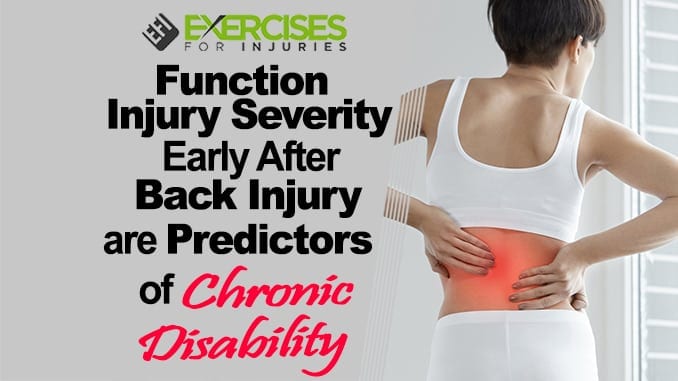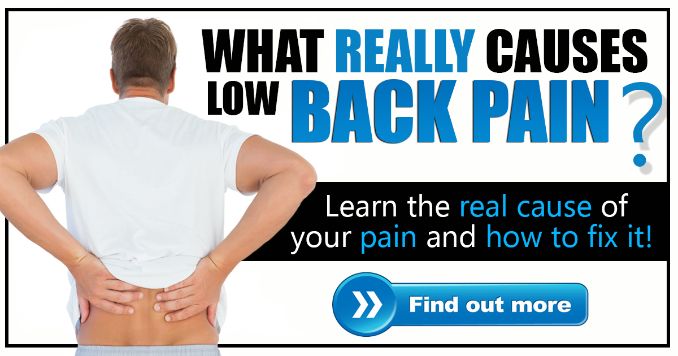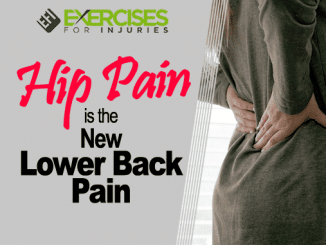
Chronic disability is a reality for a staggering number of Americans. A back injury often causes it, so there’s a lot we can do to help prevent it. Prevention includes prevention of injury, early and appropriate treatment, and rehabilitation. If you or someone you love has a back injury, don’t wait to get the help you need.
Back pain is a common complaint. More than eight out of ten people will experience back pain. Most people recover from the injury without any severe consequences. But for others, the pain can be debilitating, leading to chronic disability and poor quality of life. Although many factors have been shown to increase the risk of chronic disability after a back injury, few have been shown to predict or prevent it reliably.
Study Finds Patients Who Initially Visited a Chiropractor Had Reduced Odds of Chronic Disability.
Tuesday, February 17, 2009 – OrthoSupersite – Susan M. Rapp
Patients with high scores on the Roland-Morris Disability Questionnaire in the first few weeks after a work-related back injury were at increased risk of not returning to work one year later, according to a prospective population-based cohort study conducted at the University of Washington, Seattle.
Judith A. Turner, Ph.D., and colleagues interviewed 1,885 injured workers three weeks after they filed a claim for a job-related back injury, identifying several key risk factors that were early predictors of long-term disability. She said none was as strong a predictor as having a Roland-Morris score between 18 and 24 on a scale of 0 to 24, representing individuals with the most functional disability.
“Those in the highest category of scores had 26 times the odds of still being disabled at one year,” she told Orthopedics Today. “That is pretty strong, and even after adjusting for all other baseline factors that might explain disability, they still have over seven times the odds of being disabled at one year.”
The Reality of Chronic Disability
While it is true that many people experience back pain, not everyone develops a chronic disability. This largely depends on the function and injury severity early after the injury. The best predictors of chronic disability are function early after an injury and injury severity two months after an injury. A person’s clinical condition at two months following a back injury is also a good predictor of chronic disability.
Functional outcomes early in the recovery process are essential for the successful rehabilitation of a back injury. For example, if you can’t sit in bed without help from another person, you need to work on your functional skills before progressing to walking or other more complex skills. Injuries with lower severity scores appear to have better long-term outcomes than those with higher severity scores. The likelihood of someone recovering from an acute low back pain episode without developing chronic disability seems more significant when there is no nerve root involvement at presentation. The resultant disability remains below 40 percent when measured by Oswestry Disability Index (ODI) 2 months after injury onset.
Older patients, manual laborers, smokers, and those suffering from depression all have a higher risk of suffering from a long-term back injury. Nevertheless, increasing knowledge about what helps people recover from injuries has led to new treatments with the potential to improve outcomes even further.
Risk Factors of Chronic Disability
The following are risk factors that have been shown to increase the likelihood of chronic disability after a back injury:
- Functional impairment: Inability to walk 100 meters in less than 12 minutes, inability to stand from a seated position without help
- Injury severity: Gaseous or bloody discharge from the wound, more than one vertebra fractured
- Age: Greater than 40 years old
- Previous injury: Previous back injury, previous spine surgery
- Pain duration: Pain lasting longer than one month
- Sex: Female sex (compared to male)
What to do to Prevent Chronic Disability?
Determining whether an individual has a high or low risk for a chronic disability following a back injury is difficult. One of the most significant predictors of chronic disability after a back injury is the function of the spine at the time of injury. The severity of the damage can also predict chronic disability. For example, some patients with low-intensity injuries, such as muscle spasms, may still develop a chronic disability, while others with more severe injuries may not.
One way to decrease the risk of experiencing long-term disability following a back injury is to identify those at higher risk and offer interventions designed to improve outcomes. One study found that patients with a full range of motion in their spine were less likely to experience severe pain or be classified as disabled than those who did not have a full range of motion.
Patients who are less able to flex their spine may benefit from exercises designed specifically for this purpose. The goal would be to restore flexibility to prevent long-term consequences from developing.
CLICK HERE to watch the YouTube video
Read more about chronic disability and back pain
Rick Kaselj – [email protected]
Registered Kinesiologist Specializing in Injury Rehabilitation
Surrey, BC, Canada




